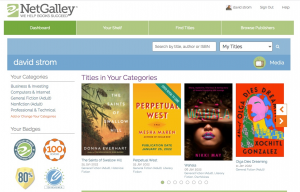
Back in the early 1990s Ruth headed up marketing for the Ziff Davis Computer Library, an early – and highly profitable – business that repackaged content from Ziff-Davis’ portfolio of publications and delivered it on a CD-ROM, if you can believe it. Ruth is an unabashed fan of B2B marketing with a wide scope of interests. As a blogger on Biznology.com, she has lamented the often toxic relationship between sales and marketing organizations and described tools for connecting with your website visitors that even our hosts were unaware of.
Ruth is past president of the Direct Marketing Club of New York and was named one of the 100 Most Influential People in Business Marketing by Crain’s BtoB magazine. She has written a number of books, the most recent being B2B Data-Driven Marketing: Sources, Uses, Results, which was co-authored Theresa Kushner. In a recent presentation, she talked about ways to plan your content marketing library.
Among the topics we touch on in this interview is the value of account-based marketing, the importance of understanding the difference between lead quantity and quality, the mistakes that B2B marketers make that still drive her crazy and why B2B marketing is more complex, difficult and fun than B2C marketing. You can listen to our 20 min. podcast recording below.
 ims to eliminate the gatekeeping middleman role of corporate PR, and put sources directly in touch with the journalists that want to quote them. HARO, as it is known, has been less useful as of late, but there is a new, venture-backed startup called
ims to eliminate the gatekeeping middleman role of corporate PR, and put sources directly in touch with the journalists that want to quote them. HARO, as it is known, has been less useful as of late, but there is a new, venture-backed startup called 
 A new
A new  This week we talk to
This week we talk to 

 The results of Paul’s informal census is that folks can’t wait to get back to F2F. We all have been in our pandemic bubbles for far too long and the urge to have human contact and serendipitous hallway meetings is a big reason to return to the rubber chicken circuit. But we’ve all learned a lot in the meantime about what makes virtual events successful. At its heart, you are putting on a live TV show with a very small staff to handle the production. You need to plan accordingly on the mixture of live and pre-recorded segments and figure out what tech you are going to use, including the video conferencing and the event management tool. (The two are different and you should understand the differences, which I explain in my paper.)
The results of Paul’s informal census is that folks can’t wait to get back to F2F. We all have been in our pandemic bubbles for far too long and the urge to have human contact and serendipitous hallway meetings is a big reason to return to the rubber chicken circuit. But we’ve all learned a lot in the meantime about what makes virtual events successful. At its heart, you are putting on a live TV show with a very small staff to handle the production. You need to plan accordingly on the mixture of live and pre-recorded segments and figure out what tech you are going to use, including the video conferencing and the event management tool. (The two are different and you should understand the differences, which I explain in my paper.)